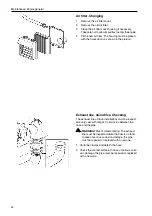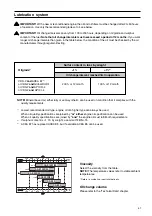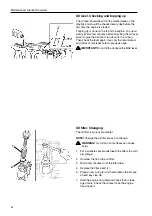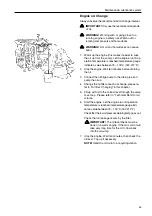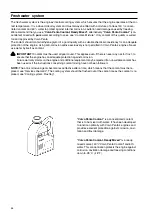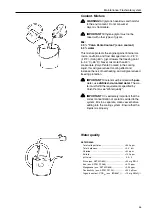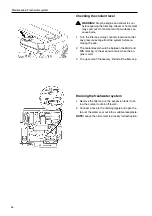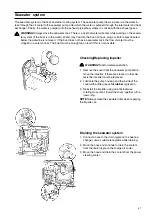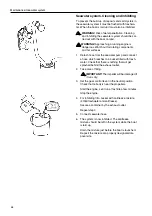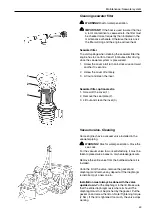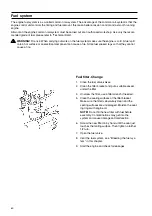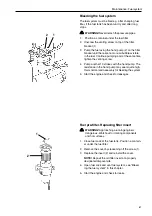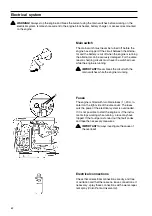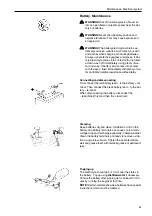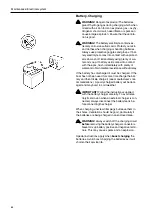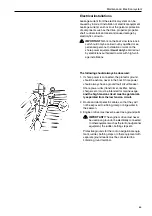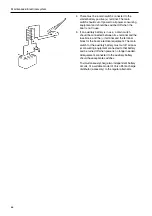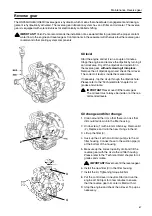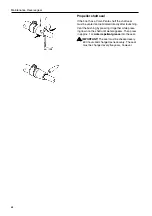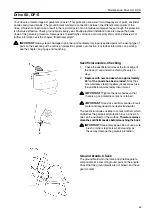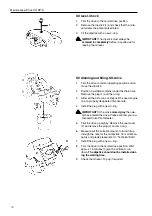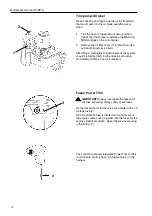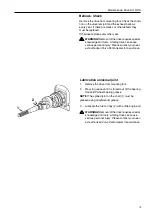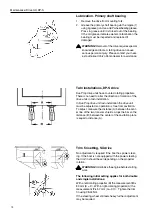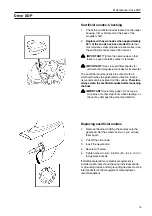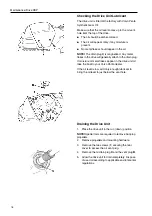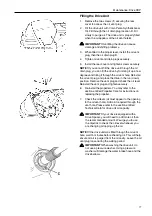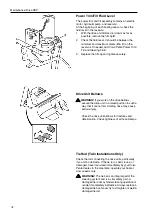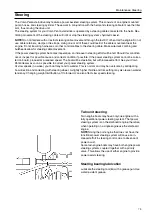
64
Maintenance: Electrical system
Battery. Charging
WARNING!
Danger of explosion! The batteries
give off hydrogen gas during charging which when
mixed with air can form an explosive gas – oxyhy-
drogen A short-circuit, naked flame or spark can
cause a large explosion. Ensure that the ventila-
tion is good.
WARNING!
The battery electrolyte contains ex-
tremely corrosive sulfuric acid. Protect your skin
and clothes when charging or handling batteries.
Always use protective goggles and gloves. If bat-
tery electrolyte comes into contact with unprotect-
ed skin wash off immediately using plenty of wa-
ter and soap. If battery acid comes into contact
with the eyes, flush immediately with plenty of
water and obtain medical assistance without delay.
If the battery has discharged it must be charged. If the
boat has not been used for some time charge the bat-
tery and then trickle charge it (see manufacturer’s rec-
ommendations). A poorly charged battery will be dam-
aged and may burst in cold weather.
IMPORTANT!
Follow the instructions supplied
with the battery charger carefully. To avoid elec-
trolytic corrosion when an external charger is con-
nected, always disconnect the battery leads be-
fore connecting the charger.
When charging, unscrew filler plugs but leave them in
their holes. Ventilation should be good, particularly if
the batteries are being charged in an enclosed area.
WARNING!
Always switch off the charging circuit
before
removing the battery charger connectors.
Never mix up battery positive and negative termi-
nals. This may cause sparks and an explosion.
Special instructions apply when
boost charging
the
batteries. Avoid boost charging the batteries as it will
shorten their service life.
Summary of Contents for D3-110i
Page 1: ...OPERATOR SMANUAL D3 130A D3 160A D3 190A D3 110i D3 130i D3 160i D3 190i ...
Page 103: ......
Page 104: ...7745859 English 12 2005 ...

